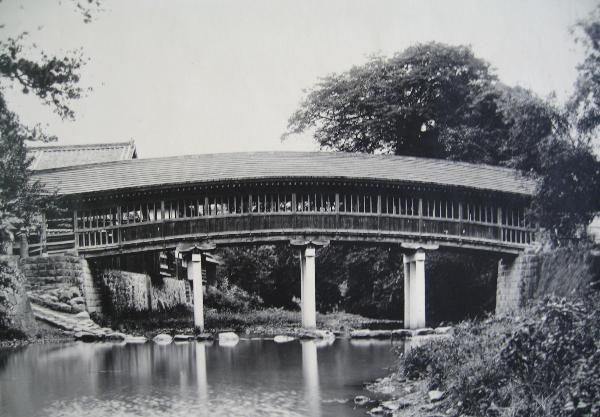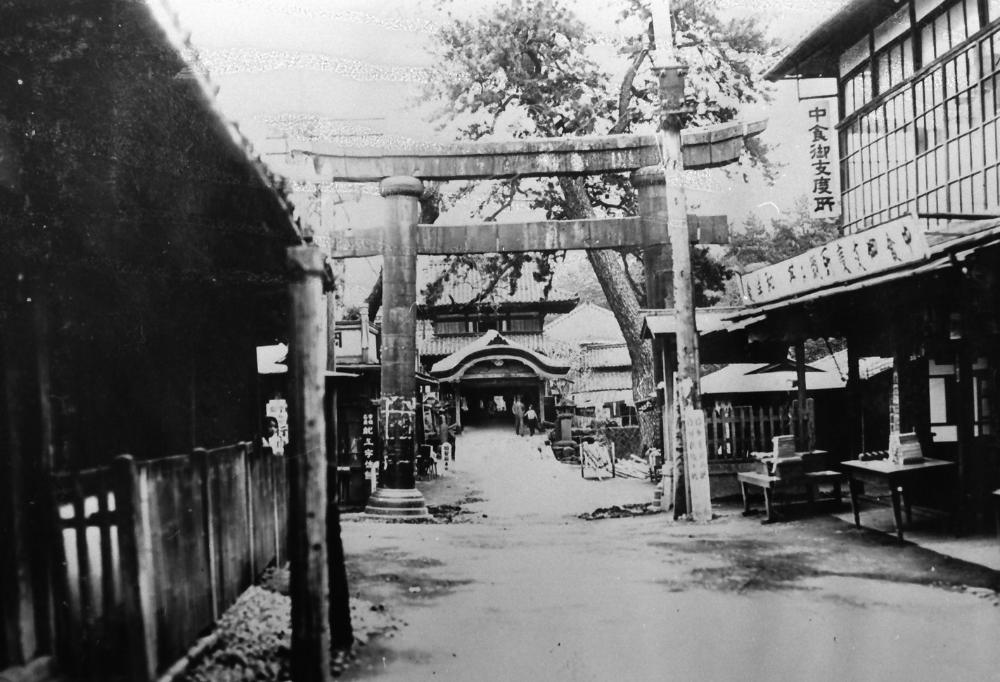Kurehashi Bridge

Kurehashi Bridge (1911)
The covered girder bridge with gates on both ends that spans the Yorimo River and serves as an entrance to the Usa Jingu shrine grounds from the west is called the Kurehashi Bridge. This ceremonial bridge is traditionally used only once every 10 years: chokushi messengers dispatched by the emperor cross it when making a pilgrimage to offer formal prayers to the shrine deities. Outside of this special ritual period, visitors approaching Usa Jingu along the Chokushi Kaido Road use the pedestrian bridge nearby.



Kurehashi Bridge in the mid-twentieth century

Interior of the Kurehashi Bridge
The Kurehashi Bridge is approximately 24.7 meters long and 3.5 meters wide. The karahafu (cusped gable) roof is covered with cypress bark shingles, and the structure is painted the distinctive vermilion color often used for shrine buildings and torii gates. Covered bridges of this type are more common in mainland Asia, and the Kurehashi Bridge is one of very few examples in Japan. According to a local legend, the bridge was originally constructed by carpenters from the Kingdom of Wu in eastern China, even though the kingdom fell several centuries prior to the founding of Usa Jingu. The legend likely arose from a possible interpretation of the name “Kurehashi.” In the past, “kure” was written with a kanji character denoting the wooden materials used to build the bridge. However, “kure” can also be written using the character for “Wu.” At some point in history, the latter character became more common, and the writing of “Kurehashi” with the characters for “Wu” and “bridge” is used as the official name today.

Kurehashi Bridge on an illustrated map (early fifteenth century)

A giboshi decoration bearing the name of Hosokawa Tadatoshi
When the Kurehashi Bridge was first built is not known, but historical documents show that it already existed in the Kamakura period (1185–1333). The current bridge was constructed in 1622 by Hosokawa Tadatoshi (1586–1641), then the lord of the nearby Kokura domain. His name is carved on some of the giboshi decorations that top the railings. The Kurehashi Bridge was restored in 1876 and then again in 1937 as part of the Great Showa Reconstruction (1932–1941) undertaken at Usa Jingu. An extension was added to the western side of the bridge when the river embankment was reinforced in 1951. The Kurehashi Bridge is designated an Important Tangible Cultural Property by Oita Prefecture.

Kurehashi Bridge and the harvest moon

This English-language text was created by Japan Tourism Agency.
- ページに関する評価
-







更新日:2024年03月18日